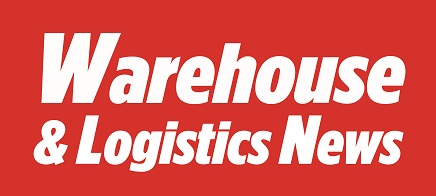The UK government is clear on its sustainability targets, and, for logistic companies, this means many are embarking on a well-rounded, internal audit to consider the various avenues that will allow them to reduce their carbon footprint. This will involve looking at alternative processes – from how they deliver to customers, right through to the equipment used across operations.

For example, companies may be looking to change the way their vehicles are fuelled; for logistic companies, this includes forklift trucks (FLTs). In this article, Stuart Viney, Calor’s National Accounts Manager for FLTs, explores how, by switching to a sustainable fuel, logistics companies can reap the same benefits as using LPG, while also reducing carbon emissions.
While we are seeing an increase in businesses focussing on how to improve the environmental impact of their operations, there is now also increasing pressure across the supply chain to demonstrate how they too are taking steps to reduce carbon emissions.
In warehousing and logistics, there are several factors to consider. A significant amount of energy consumption comes from lighting, heating, cooling and air conditioning, as well as fixed and mobile material handling equipment which generates considerable carbon dioxide emissions.
Forklift trucks, for example, are essential for ensuring operations run as smoothly as possible, but not all of them are sustainably powered. Our report, Lowering the carbon emissions of forklift trucks: An industry survey report, found that 95% of FLT fleet operators felt that much more could be done to lower their carbon emissions.
So, as advancements in technology continue, switching to a more sustainable fuel for your fleet is a good first step when looking to make a start on lowering your carbon footprint.
The shift from diesel
Diesel is commonly used to fuel FLTs. It offers a powerful fuel that is especially suited for outdoor applications, but it emits high levels of harmful emissions.
Soot marks from diesel can spoil packaging too, making diesel fuelled FLTs unsuitable for facilities manufacturing food and other ingested goods, due to the strict health and safety regulations in place.
For logistic companies to cut down on their carbon footprint, it is becoming more evident that shifting away from using diesel is a good place to start.
How LPG offers an alternative solution
In contrast, LPG emits 98% less particulate matter than diesel. These emissions are lead- and soot-free, and – when fitted with a three-way catalyst – contain very low levels of carbon monoxide and NOx emissions. Furthermore, there is no risk of spillage with LPG, as it simply vaporises. In contrast, with any diesel spillages, there is the potential for clean-up costs and fines, which can be significant.
FLTs fuelled by LPG are also quieter than diesel models, creating less noise pollution for the surrounding environment and making for a more pleasant working environment for operators and other employees.
And, due to their low emissions, a key benefit to FLTs fuelled by LPG is that they can be used almost anywhere. Whether it is a food manufacturing site or another sensitive production environment, LPG can be confidently used both indoors and outdoors, offering a flexible solution for operators.
Should you consider electric FLTs?
To tackle the sustainability agenda, electric FLTs have become more popular. Great for reducing carbon emissions, electric FLTs can help improve the air quality on sites and reduce noise pollution due to the quietness of electric vehicles.
However, one challenge that comes with electric FLTs is that they require consistent downtime due to continual charging after use.
Charging, regular equipment checks, and maintenance could represent quite a change from how your fleet currently operates, potentially causing a significant rise in downtime. In comparison, LPG-powered forklifts can run up to three times longer than electric as they do not require as much time to recharge.
Another benefit of LPG over electric FLTs is cost. LPG-fuelled FLTs are generally less expensive to buy and more cost-effective to maintain when considering the cost of replacement batteries for electric models. With electric FLTs requiring batteries to be charged, those converting to LPG will witness a dramatic reduction in electric consumption, and – with LPG-fuelled FLTs costing less to operate – a difference to the bottom line too.
Introducing Calor Futuria Liquid Gas
An additional, effective way FLT managers can improve sustainability is to consider alternative LPG-based fuels. Calor Futuria Liquid Gas (previously BioLPG), for example, is a sustainable fuel made from a blend of waste, residues, and sustainably sourced materials. It is also available at no extra cost to standard Calor LPG customers, so FLT businesses looking to make the switch to Futuria Liquid Gas can ensure cost efficiencies are maximised too.
Futuria Liquid Gas brings impressive carbon reductions when compared to diesel and conventional LPG. Using a mix of 40% Futuria Liquid Gas and 60% conventional LPG, businesses can further reduce carbon emissions by up to 48% (kgCO2e/kWh) compared to using diesel and 33% when compared to conventional LPG. In addition, FLT fleets currently using diesel as a fuel can also reduce particulate matter by up to 98%, by switching to Futuria Liquid Gas.
For companies already running LPG FLTs with a different supplier, switching to Calor Futuria Liquid Gas involves minimal additional investment because it is chemically identical to LPG. Most existing infrastructure, such as your FLT fleet, does not need to be upgraded or replaced. You will simply need to replace your current LPG tank with a Calor one.
Where performance is important, FLTs fuelled by Futuria Liquid Gas often have superior travel speeds, rate of acceleration, and lift speeds compared to their electric counterparts. Futuria Liquid Gas fuelled FLTs can also perform consistently outdoors, including in colder climates and are reliable when it comes to refuelling, which only takes a few minutes, after which the FLT can return to full operation – allowing efficiency to keep up with operational demand.
To find out how your FLT business can reach your sustainability targets with Calor Futuria Liquid Gas, visit www.calor.co.uk/flt.




Comments are closed.